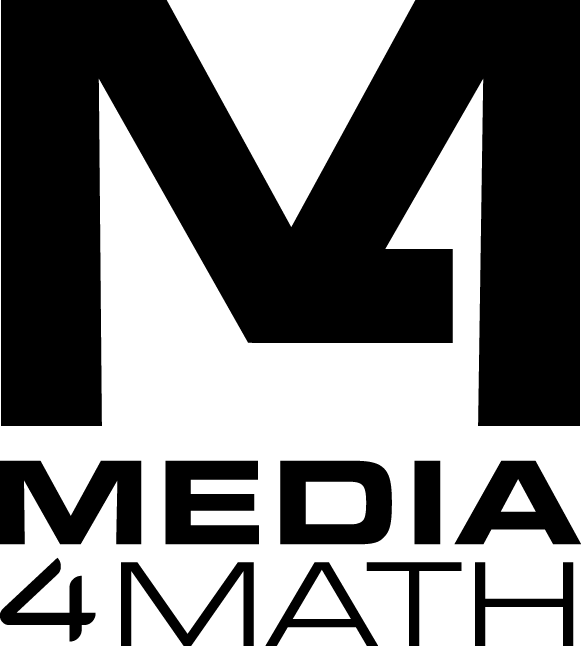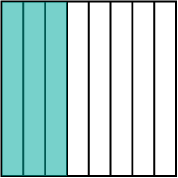 Lesson Plan: What Is a Fraction?
Lesson Plan: What Is a Fraction?
Lesson Objectives
- Introduce the concept of fractions
- Represent fractions using various models
- Understand the relationship between fractions and whole numbers
TEKS Standards
- 3.3(A) Represent fractions using models and number lines
- 3.3(B) Determine fractions on a number line
- 3.3(C) Explain unit fractions
- 3.3(D) Compose and decompose fractions
- 3.3(E) Solve partitioning problems
- 3.3(F) Represent equivalent fractions
- 3.3(G) Explain equivalent fractions
- 3.7(A) Represent fractions on a number line
Prerequisite Skills
- Understanding of whole numbers
- Ability to partition shapes into equal parts
Key Vocabulary
- Fraction
- Numerator
- Denominator
Warm-up Activity (5 minutes)
- Display an unsliced pizza and various ways of slicing it. Use this slideshow: https://www.media4math.com/library/slideshow/slicing-pizzas
- Divide the class into small groups of 3-4 students.
- Ask the students to discuss how they would divide the pizza into equal slices so that everyone in the group gets a fair share.
- Discuss as a class the challenges they faced in ensuring equal parts and the importance of fractions in fair sharing.
Teach (20 minutes)
Defining Fractions
- Explain that a fraction represents equal parts of a whole.
- Review fraction basics with this slide show: https://www.media4math.com/library/slideshow/fraction-basics
- Introduce the terms "numerator" and "denominator."
- Numerator: The number above the fraction line, representing the number of equal parts.
- Denominator: The number below the fraction line, representing the total number of equal parts in the whole.
- Use this slide show with these definitions: https://www.media4math.com/library/slideshow/fraction-basics-definitions
Modeling Fractions
- Draw a circle on the board and divide it into equal parts (e.g., halves, thirds, fourths).
- Label each part with the appropriate fraction (e.g., 1/2, 1/3, 1/4).
- Use the slide show from the previous section: https://www.media4math.com/library/slideshow/fraction-basics
- Repeat the process with different shapes (e.g., rectangles, squares) to reinforce the concept.
- Encourage students to identify and label the fractions represented by the shaded parts.
- Review these fraction circle models and have students identify the denominator represented by each fractional part: https://www.media4math.com/library/slideshow/fraction-circles
Review (5 minutes)
- Review this slide show and have students identify the fractions shown: https://www.media4math.com/library/slideshow/identifying-fractions
- Ask them to identify:
- The fraction of the pizza left
- The fraction of the pizza eaten
- Discuss their answers as a class and address any misconceptions.
Assessment (10 minutes)
Use the following quiz to assess students.
Quiz
- What is a fraction?
A. A fraction represents equal parts of a whole.
B. A fraction is a whole number.
C. A fraction is a type of measurement.
D. A fraction is a type of shape. - What does the numerator represent in a fraction?
A. The total number of equal parts in the whole.
B. The number of shaded parts.
C. The number of equal parts being considered.
D. The number of unshaded parts. - What does the denominator represent in a fraction?
A. The number of equal parts being considered.
B. The total number of equal parts in the whole.
C. The number of shaded parts.
D. The number of unshaded parts. Which fraction represents the shaded portion of the circle below?

A. 1/4
B. 3/4
C. 1/2
D. 2/4- If a rectangle is divided into 6 equal parts, and 3 parts are shaded, what fraction does it represent?
A. 3/6
B. 4/6
C. 2/6
D. 5/6 - Which of the following is NOT a fraction?
A. 1/3
B. 5/1
C. 2/5
D. 7/10 - What fraction is represented by the shaded portion of the square below?

A. 5/8
B. 2/8
C. 3/8
D. 4/8 - If a circle is divided into 5 equal parts, and 2 parts are shaded, what fraction does it represent?
A. 1/5
B. 3/5
C. 4/5
D. 2/5 - Which of the following fractions represents the shaded portion of the rectangle below?

A. 1/6
B. 4/6 or 2/3
C. 5/6
D. 3/6
- If a square is divided into 10 equal parts, and 7 parts are shaded, what fraction does it represent?
A. 7/10
B. 3/10
C. 5/10
D. 8/10
Answer Key:
1. A
2. C
3. B
4. D
5. A
6. B
7. C
8. D
9. B
10. A
![]() Purchase the lesson plan bundle. Click here.
Purchase the lesson plan bundle. Click here.